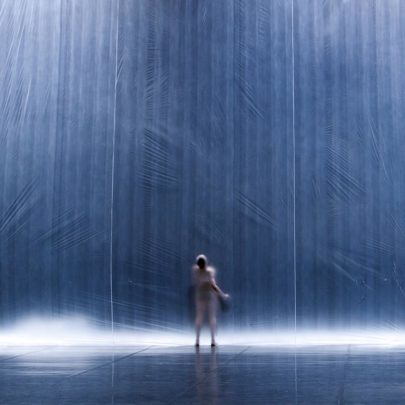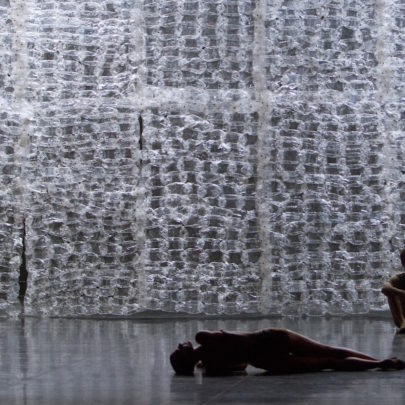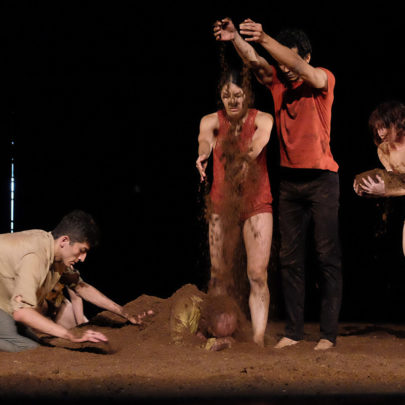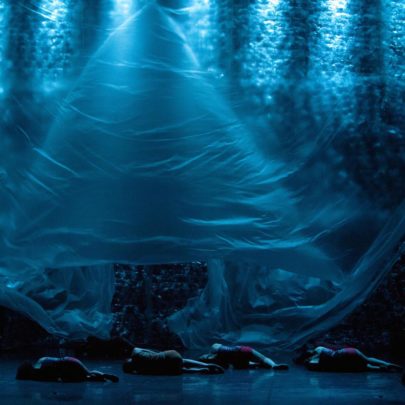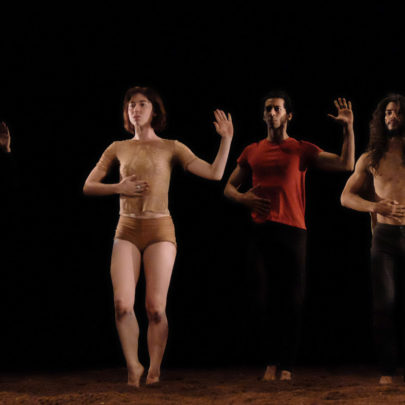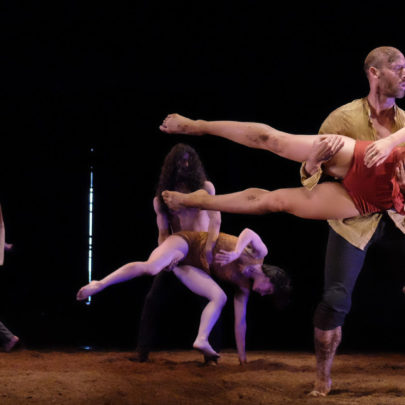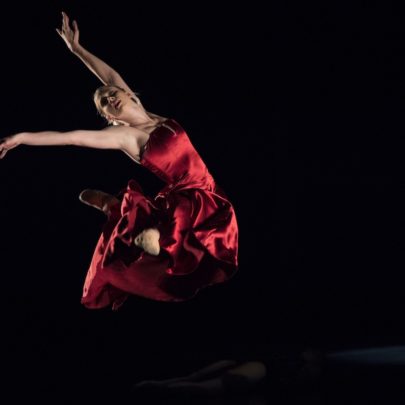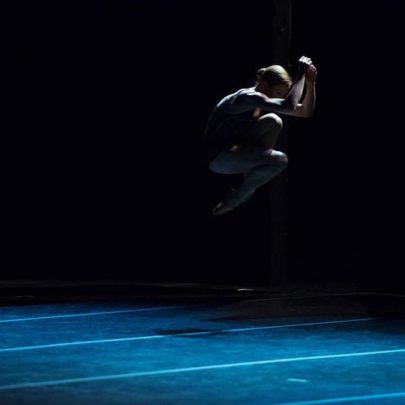Tania Pérez-Salas Compañía de Danza
3.Catorce Dieciséis (3.Fourteen Sixteen)
Ex-Stasis
- Cancelled due to COVID-19
- Cancelled due to COVID-19
-
New York, USA
-
Marin Marais, Girolamo Frescobaldi, A. Vivaldi, François Couperin, Giovanni Batt
-
Meredith Monk, Monolake, Pan Sonic, Chris Isaak, Gustavo Cerati & Digitalverein
-
75 min (including intermission)
Innovative. Theatrical. Raw. Personal. These are only a few adjectives that have been used to describe the work of Tania Pérez-Salas, Mexico’s leading contemporary choreographer. In Ex-Stasis, Perez-Salas explores trusting our instincts to let the body communicate with the mind. 3.Catorce Dieciséis (3.Fourteen Sixteen) draws inspiration from the number Pi to reflect on the circularity of our movement through life. With intense theatricality and breathtaking imagery set to music by Vivaldi and other Baroque composers, 3.Catorce Dieciséis (3.Fourteen Sixteen) is a joyful feast for the senses.
“Exquisite lighting and provocative visual design characterize each piece, and it is the imagery that stays with the viewer long after the movement fades.“
THE BOSTON GLOBE

1. Where do you find inspiration for your choreography? What motivates you?
I am very inspired by the different places I visit, but mainly my perspective comes from living in the jungle that is Mexico City. Mexico provides me with many points of view on the way the people see and feel, that moves me to mingle emotions with what I feel and see. Talking about death, love, feminism or more than feminism, femininity. There’s books where the words inspired me. The words mean a lot of things I had in my mind.
I am very anxious sometimes. What is love? Does it really exist? The eternal questions… through life you have to ask yourself many things. Dance helps me to answer those questions. Dance embraces me. If there’s no concrete answer, dance contains my body and empowers me to continue walking.
2. 2019 marked your company’s 25th anniversary and you decided to go on tour. We’re honoured that Victoria is your only stop in Canada! What are you looking forward to most with this tour?
For me every audience is a challenge. A challenge to communicate things that come from my culture. For Mexican culture to be understood, through dance. I feel anxiety and a lot of pleasure to share my experiences in life through dance to a new audience. Many things to say and many things to perceive. My whole career has been developed in Mexico but the tours happen to be very important in new creations. The energy I get from a place imprints very much on the pieces that are in process. In those short amounts of time, I get to see how a different place perceives and sees in other parts of the world. It is important feedback to me. If I have the time, I will visit museums and connect with people from other cultures.
3. We are presenting Ex-Stasis and 3. Fourteen Sixteen. In Ex-Stasis you explore the need to be attentive to your body and trust its instincts so your body can communicate with your mind freely – especially in modern times when we’re trained to work at all costs. Why did you feel compelled to create this piece?
All my work has to do with my biography in a way. Sometimes we need historical or literal pieces, pieces that have to do with being inspired by a book. But even in those pieces, a part of me, my life, my way of viewing sense of love, sense of divinity, death, sense of depression all goes into it.
In the case of Ex-Stasis, I felt I was not hearing my body, I was just doing what my mind and my reason wanted to do. So I was being led by rules. You don’t go to the bathroom, you don’t sleep so you don’t dream. If you have to work 14 hours, you have to work 14 hours. It doesn’t matter what you feel, what your heart says. If someone is angry with you, it doesn’t matter, you continue, you don’t stop. You just have to play the game, be very professional. I didn’t stop to feel what my body was saying, even though it was communicating to me. I know I was feeling a lot of things, but I really didn’t hear them at all. It is good to be aware that you should always be of what your body is telling you, always listen to your heart, your instincts. Most of the time instincts are right. They will almost always lead you to the right decision.
4. How is Ex-Stasis also about the impact of technology in modern society?
In Ex-Stasis I also felt I needed to use the plastics because plastic is the technology of my period of life. I can see computers going back, telephones developing, androids coming into existence, but plastic is everywhere. For example in Mexico, I could go to ocean, to the most virgin place, and I would find a plastic bottle or bag. I said to myself, this is incredible, this is my time and that specific material is relevant in technology in my time. It was not the bottle, not the computer, it’s the plastic. An element that means technology, that means artificial. And then it dawned on me that I could dance with the plastic. I could feel the air going in and out, but at the end, if I wanted to connect with a body, it also represented that part that I was not feeling: my heart. If I felt something I wouldn’t go through the plastic, I wouldn’t break it. I was only staying at the level where the plastic let me go through. There was an edge, a barrier that wouldn’t let me discover another person, discover another motion, discover anything on the other side. It could give me an inner emotion, but I could not express out loud what I was feeling or communicate through the plastic. But all that together sent a message. The message of erotism, of being lively, of the power of dance, movements, emotions, of feeling something we cannot describe, but it is there and it expands from our soul to a complete phrase of movement.
5. 3.Fourteen Sixteen (3. Catorce Dieciséis) reflects on the circularity of movement through life drawing inspiration from the number Pi. You have said that it also plays on the theme of decadence – how one percent of the world’s population represents “the rich” and unequal hierarchies that abuse power. How does your choreography communicate and reflect on these complex themes?
3.1416 reflects one day, one life. It is the way we wake up, the way we get into a different density, intensity too, in a day. You have contact with yourself, with others. The power of the woman in dance, of man in dance and of both through life. Those two energies you can see them one before the other and they are different but very energetic. And then they come together and you see another combination of energy. And finally at the end, meaning in the night when we are going to rest. It is a cycle where many things happen. And in the middle of 3.1416, many times I want to cry. It’s the part where we feel the community, where we are whole, we are 3.1416. We are Pi, we are circularity, we as a community. It is not individual. Giving themselves to something more powerful. That something could be God, the mountains, the wind, the light, water. We are devoted, we are defeated emotionally before all this beauty that is part of our world. We are nothing without it.
6. Did the music by Vivaldi and other Baroque composers come after the choreography or did you use the music to help create the movement?
In this case I was absolutely moved by the music. This buffet of music that I’ve loved since I was a child. I couldn’t contain it anymore in my body and I had to do something with this music.
It had to do with that sense of community, that sense of power, and the elements that went into the music. These elements you will find in the piece. The instrument that goes in and out and the way it performs. The dancer is the music on stage, in this case specifically.
7. What is your greatest challenge as director of a dance company in Mexico? What is your greatest joy?
The greatest challenge has been financial stability through dance. It is difficult in Mexico, in every part of the world. We have worked and not gotten paid which influenced the company, my life, my family. Developing art is challenging always, everywhere. I know that for many choreographers it is hard to have a company.
My greatest joy is balance. Being able to, after writing projects for hours, days, months, being able to get into the studio and work with the people, the dancers I love. I can sense their life through the movement and this in balance with my family is my greatest joy.
8. Do you have plans to open a dance school in Mexico?
Yes. I am right now starting to plan the next five years and I think within those five years we will be able to open a school, a school for dance and choreography in Mexico. A school in which the students have to study way more than just dance. They’ll have to study movies, choreography, lighting design, life, voice. I want to give them the tools to develop their own language.
9. What do you hope audiences will take away when experiencing your works?
Being able to forget about our daily concerns, experience something that is not your everyday. When I go see dance, I feel like a different person. I feel encouraged, it takes my breath away and gives me another perspective of my little life. It gives me another way of perceiving my own life. It is energy that goes in and out through the audience and the dancer. It’s the dancers projecting emotions and their life experiences on stage. This very sacred energy, that is what I want the audience to experience.


